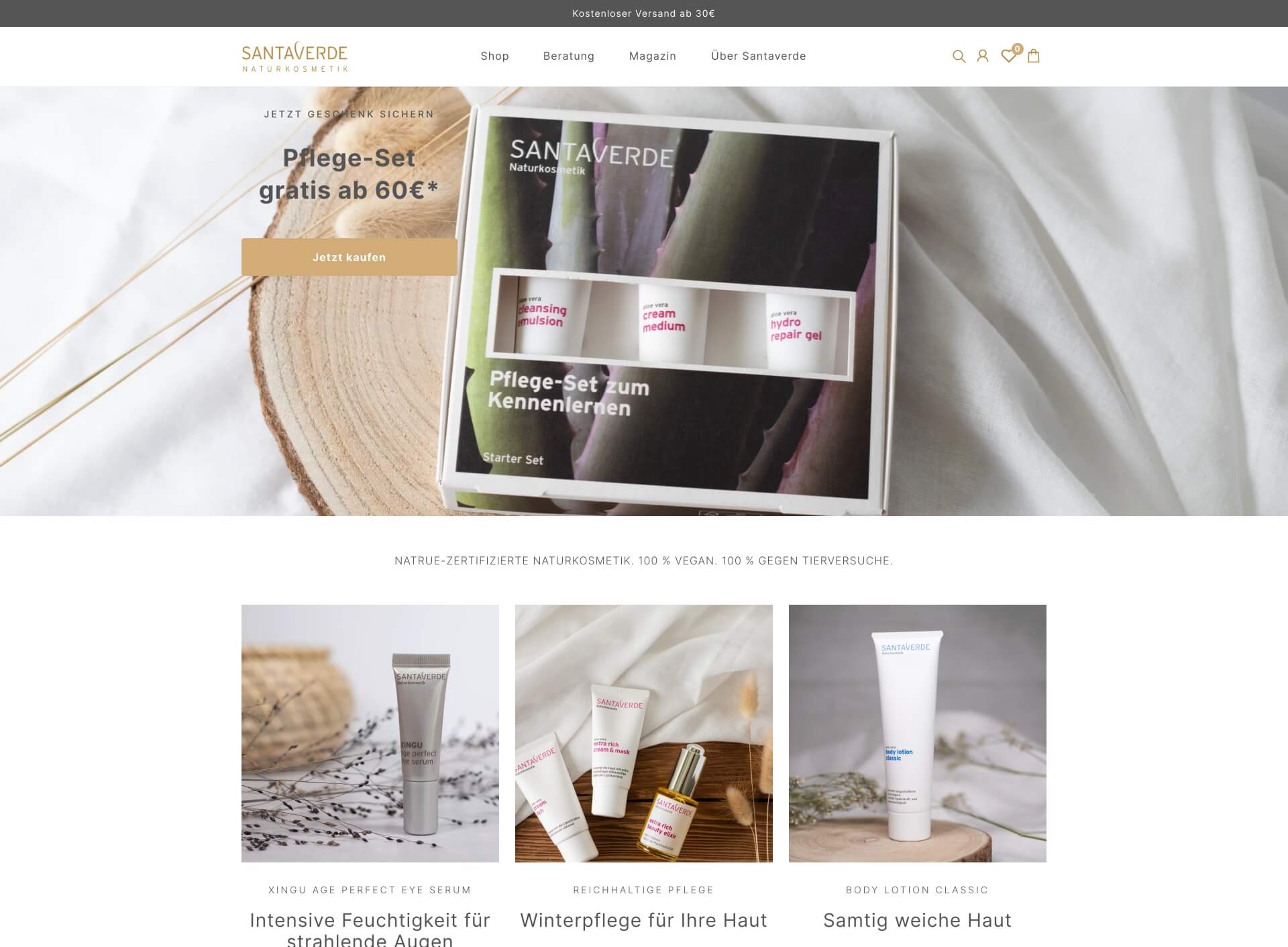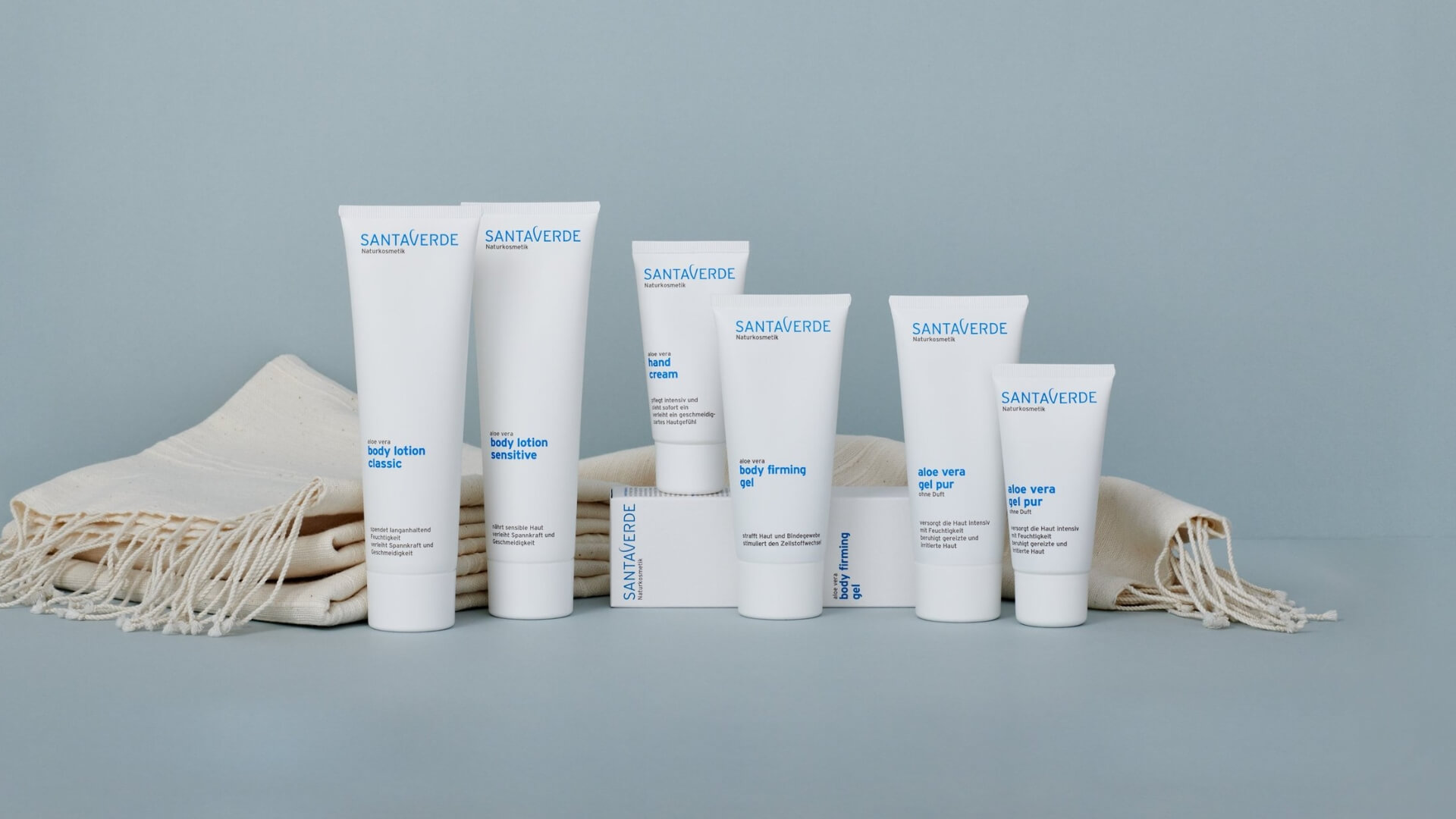
Adapting to change: Santaverde’s journey to digitalisation
2021 was a tough year for businesses in many industries. Brick and mortar stores saw an abrupt decline in sales due to lockdowns. Restaurants were forced to adapt their operation to take away and delivery only and the urgency to buy toilet paper, among other things, encouraged more than a few start-ups to start delivering groceries in record time.
CLIENT
SantaverdeINDUSTRY
Lifestyle, BeautyTECHNOLOGY
Shopify plus webshopsPACKAGE
Webshop migration
Services we provided

Migration
Store Development

UX/UI Design

Internationalization
E-commerce
E-commerce on the other hand thrived, witnessing an exponential growth in categories like yoga and fitness, to name a few. People seriously geared up and found activities they could carry on doing at home to deal with boredom and distress. We saw the rise of adaptive concepts like “click and collect” and announcements of payment integrations to massive platforms like Facebook and Google. The reasons for these abrupt changes were obvious: the ongoing digitalisation era had just received a booster shot, and the chances of going back to offline-only behaviours are low. Who’d go back to pigeon post, right?

Santaverde is a natural cosmetics brand, made in Germany, with presence in over 1,000 physical stores nationwide. They were hit hard by the effects of the lockdown, with most of their sales focused on physical retailing shops.
The company decided to rethink their sales strategy and give more focus to sales on their online shops: “Before Covid, direct-to-consumer (D2C) was not our focus. Only 4% of our revenue was from online. The first lockdown instantly made us realize how important our own online business was. So we started looking for a solution that would enable us to meet customer requirements quickly and build a relationship with our customers directly. And Shopify offers us exactly this.” explains Heiko, CEO at Santaverde.

Code helped us big-time in setting up our new webshop, structures and work flows in a way that now enables us to support and scale our own online business. And Shopify really provides us with the best tools to get to know our customers better, helping us build better relationships with them.
Migrating from Shopware to Shopify Plus
Focusing on e-commerce does not necessarily mean you have to learn to code. It means you need to choose the right technology that allows you to grow your business in a future-proof way. Classical symptoms of running on complicated or outdated technologies are:
- Features take very long to develop;
- Servers crash when you need them most + need maintenance;
- Integrating external services is a nightmare;
- All the above cost more than you would like them to.
Santaverde chose to migrate from Shopware 5 to Shopify Plus and implemented services from different apps to their new webshop. Having a system that easily integrates with external parties allowed them to have features like limiting the number of test products per purchase, inserting a physical store locator and setting up a product recommendation quiz. Since the applications are already built, we focused on integrating and styling them. Less coding, less costs.
Julia, e-commerce manager at Santaverde, points out: “Code helped us big-time in setting up our new webshop, structures and work flows in a way that now enables us to support and scale our own online business. And Shopify really provides us with the best tools to get to know our customers better, helping us build better relationships with them.”

Logical steps forward
Once the online sales started picking up, the fulfilment process needed to work like a charm. So we made sure that the data flows to the places where Santaverde needs it: their Enterprise Resource Planning (ERP). There are different ways of achieving this - you can read more about ERP's here.
Santaverde’s old processes required them to manually download online orders, gather them as PDF files and upload them to the fulfilment centre’s server on a daily basis. Extremely time consuming, error prone and not scalable. Today, Shopify’s backend pushes orders to their Fulfilment center via their ERP, which regulates the stock and prevents overselling.


Going international
As Santaverde’s internal team structure is also leaning towards online, Santaverde’s plans are to expand to countries outside the DACH (Germany, Austria and Switzerland) region. One of the perks of Shopify Plus is having more than one storefront for different countries without additional fees. And why would a business want more than one storefront? Because translation does not mean localisation.
We very often see stores that use translating apps in order to have a single store in different languages. Unfortunately, the integration of apps is not ideal and the stores end up having glitches. By managing multiple stores you can localize topics like content, service, taxes, marketing, payments and logistics. Bob explains the importance of a multi-store setup in this blog.
Having separate storefronts allows for more adaptability to the local markets’ needs. Audiences and demographics vary across countries (especially in Europe) and as a merchant it is crucial to understand this to build a closer relationship with your clients.
On top of the above, Santaverde adopted a new design we co-created with Bolden to give their website a fresher look and improve accessibility on mobile. The new webshop allows users to navigate more intuitively and has settled a branding language that better fits their products. By the way...they have a really cool product formula. Give it a try ;)
We are excited to see the first results and delighted to be part of Santaverde’s digitalisation journey!


